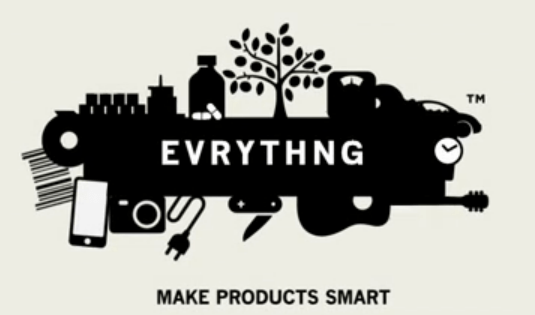The Internet of Things. It’s a phrase that holds so much promise but to date has not yet turned our world into one filled with tiny connected sensors feeding a vast matrix of data – just yet. Data surrounding us from every animate and inanimate object in the world. That at least has been the vision, if a tough one to achieve.
However, UK and Switzerland-based startup called Evrythng thinks it might just be able to fulfil the promise of the idea, and claims to have has both the technology and the partners. Specifically they are announcing drinks giant Diageo as the first partner, although they can’t say exactly how they are working with them yet. Plus, they have the financiers. Niklas Zennström’s Atomico Ventures has backed them to the tune of $1m in a first funding round and another believed to be on the way. Evrythng is talking to other manufacturers of consumer goods and running a closed beta developer program right now. And they will achieve all this because of the rise of the smartphone.
Evrythng will provide what they call “Active Digital Identities” for everything, putting physical objects on the web and a rich set of tools to build and drive applications linked to physical things. Think of ‘a Facebook for things’ where individual objects, like the products in our lives, have a unique online profile, like we all do, which can be updated, shared and added to.
Co-founders Niall Murphy and Andy Hobsbawm say the platform will also crucially, be a secure one.
Murphy co-founded WiFi company The Cloud (which sold to Sky last year). They then teamed-up with two Swiss engineers from ETH who run a leading research/hacker community in this space called webofthings.org. Vlad Trifa and Dom Guinard have now come on-board as co-founders.
CMO Hobsbawm says Evrythng says these unique identifiers created by manufacturers or other third parties means data about products will be able to be manually or automatically updated via sensors attached to the objects. Thus we get objects which can make suggestion to users based on anything, like location or time of day… pretty much anything you can imagine. This information is delivered dynamically to consumers when they “check in” to the products by scan/swiping with their smartphones.
“Personally I think this is pretty interesting and different to simply the ‘IoT’ idea of everything connected to everything else. Yes fine, but how do you do that NOW without attaching tweeting dongles to packets of washing powder or embedding GPS chips in shoes or whatever?” he tells me.
It also gives rise to the idea of “Product Relationship Management”. This involves giving digital identities to products and allowing dynamic delivery of content/services to consumers. This would then turn physical products into owned digital media. Clearly this is a big deal for companies with hundreds of millions of products sitting on shelves every year, because the associated communication and services usually sit elsewhere and are not directly connected to the individual product. The implications are reduced Point Of Sale costs, reduced service/return costs, a channel for one-to-one comms with customers on an ongoing basis, and so on.
And there are obvious anti-counterfeit opportunities. A single identity on an object could trigger/serve multiple apps. So the scenario is a consumer ‘checks in’ to the product for one reason (to unlock a world of content, services, apps, experiences, whatever), and the supply chain can check whether products are real and where they should be.
Evrythng is also working on a partnership program for marketing agencies which can re-sell their services to their clients/brands. “We’re finding that the best agencies immediately see opportunities for creating innovative, personalised digital experiences for consumers on behalf of the brands they serve,” he says.
“If Verisign managed certs for e-commerce, we want to manage identities for connected objects on the web,” says Hobsbawm.
It’s a vision clearly as big as the Internet itself.
